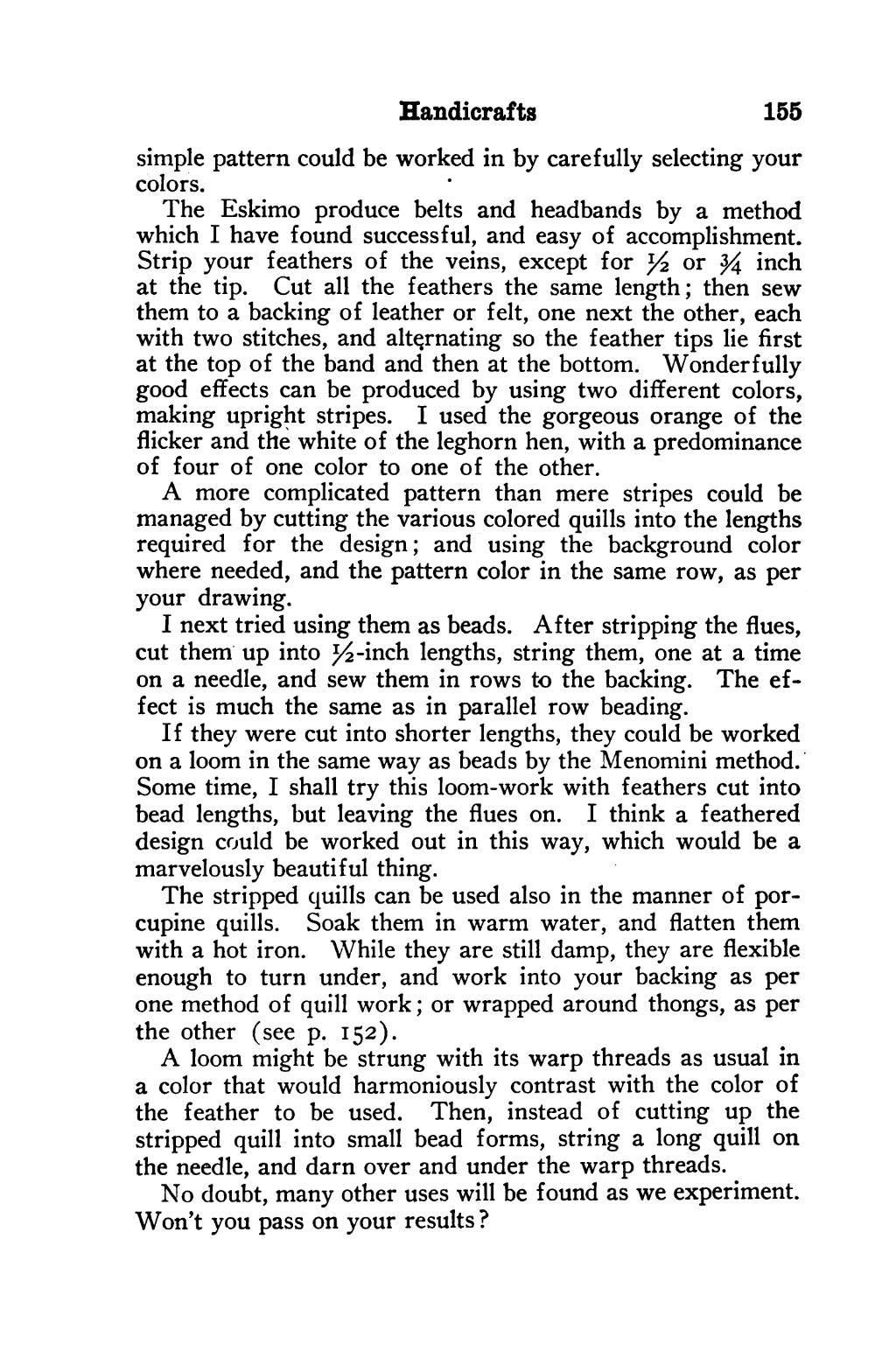Handicrafts 155 simple pattern could be worked 1 in by carefully selecting your colors. The Eskimo produce belts and headbands by a method which I have found successful, and easy of accomplishment. Strip your feathers of the veins, except for % or 34 inch at the tip. Cut all the feathers the same length; then sew them to a backing of leather or felt, one next the other, each with two stitches, and alternating so the feather tips lie first at the top of the band and then at the bottom. Wonderfully good effects can be produced by using two different colors, aking upright stripes. I used the gorgeous orange of the flicker and the white of the leghorn hen, with a predominance of four of one color to one of the other. A more complicated pattern than mere stripes could be managed by cutting the various colored quills into the lengths required for the design; and using the background color where needed, and the pattern color in the same row, as per your drawing. I next tried using them as beads. After stripping the flues, cut them up into 14-inch lengths, string them, one at a time on a needle, and sew them in rows to the backing. The ef- fect is much the same as in parallel row beading. If they were cut into shorter lengths, they could be worked on a loom in the same way as beads by the Menomini method. Some time, I shall try this loom-work with feathers cut into bead lengths, but leaving the flues on. I think a feathered design could be worked out in this way, which would be a marvelously beautiful thing. The stripped quills can be used also in the manner of por- cupine quills. Soak them in warm water, and flatten them with a hot iron. While they are still damp, they are flexible enough to turn under, and work into your backing as per one method of quill work; or wrapped around thongs, as per the other (see p. 152). A loom might be strung with its warp threads as usual in a color that would harmoniously contrast with the color of the feather to be used. Then, instead of cutting up the stripped quill into small bead forms, string a long quill on the needle, and darn over and under the warp threads. No doubt, many other uses will be found as we experiment. Won’t you pass on your results?
Stránka:roll 1931.djvu/171
Z thewoodcraft.org
Tato stránka nebyla zkontrolována
